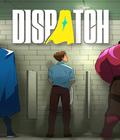
Genre: RPG
Publisher: Interplay
Developer: Black isle/Snowblind Studios
Release Date: 22-Oct.
 If you ask most people what they call an RPG, an you’ll get a response like this: “Well, you go around a map by yourself, gaining experience, fighting turn-based battles, talking to people, following a storyline.” Baldur’s Gate: Dark Alliance, however, throws most of those standards out the window. Sure, it has a story. Sure, it has experience and leveling up. It’s got different weapons and armor, and even a few different character classes. But that’s where the similarities end, for the most part.
If you ask most people what they call an RPG, an you’ll get a response like this: “Well, you go around a map by yourself, gaining experience, fighting turn-based battles, talking to people, following a storyline.” Baldur’s Gate: Dark Alliance, however, throws most of those standards out the window. Sure, it has a story. Sure, it has experience and leveling up. It’s got different weapons and armor, and even a few different character classes. But that’s where the similarities end, for the most part.
The story in the game honestly isn’t that important. While it is there, you won’t find yourself battling through hoardes of enemies to get to the end of it, which is somewhat disappointing. However, there is motivation – the game is damn fun. Flawed, yes, but we’ll get to that later.
We find ourselves starting a game with the option of playing alone, or with a partner. I’ll tell you straight off the bat: this game is not half as fun as it is with a friend. In fact, it can be downright boring, monotonous, and awfully hard. So I advise you to find a friend to aid you in your quest. After this decision, each of you are asked to pick a character class.
Each character class is rather different, and for the most part, balanced. There is the archer, who is skilled at using a bow and arrow. He can also learn magical spells to enchant his arrows, making them flaming, lightning, or the like. The dwarf class focuses on plain old melee combat. He’s very powerful with most weapons, and can wield large two-handed weapons with ease. Oftentimes, he’ll do twice as much damage as the other classes with most weapons. The final class, the sorceress, is skilled in using magical spells. She’ll learn a repertoire of spells like thunder storms, fire blasts, and “homing missiles”, if you will. While she can also use some weapons, she can’t hold large, heavier ones like, say, a battle axe.
During the game, you’ll be playing in a rather overhead view. While this makes for less detailed, smaller characters and environments, it does suit the game well, usually allowing for enough freedom of motion to get by. The camera is a bit of a pain when you need to use it. It moves slowly, and only around in a circle. It can’t zoom in or out, and walls that are blocking your view ought to become transparent like many other games do – sometimes you’ll find yourself dead because you don’t know what’s going on.
The game is heavy on action, and not so much story, as I mentioned before. You’ll find yourself travelling through simply huge levels, seemingly getting nowhere, sometimes for a half-hour or more at a time. There is, thankfully, a map that can be brought onscreen to help you lead your way, although it only keeps track of area you’ve already covered.
How are the controls? They work. They are neither revolutionary or crap, but they get the job done. The A button will be getting a workout the most, since that is what swings your equipped weapon. Some might say the game is a button masher, and admittedly, it is, at times. But there are many areas to balance this out that require strategy and patience, and this could be one reason why the game is better with a friend: you can strategize together. Figure out how you can use a room to your advantage to take out an army of javelin-hurling freaks, for example. The B button will perform the magic spell you have selected – which can be selected by pressing up or down on the D-pad. A small list will appear at the bottom, where you can scroll through spells you have learned. It’s handy and efficient. There’s also your standard jump button (Y), your action button that opens doors, unlocks chests, turns switches, etc (B), and of course moving with the left analog stick, while the right controls the feeble camera. The black button can be used for blocking. If you have a shield equipped, you can hold it for as long as you wish you fend off projectiles or whatnot, but if you only have a weapon (perhaps one that requires two hands) you can also block with it, but only for about a second. The left and right triggers restore your mana and health, respectively, as long as you have potions available. If you don’t, it could be a good idea to rest awhile in safety, as they do replenish themselves, slowly but surely.
The graphics in the game are crisp, but simple. Every now and then you’re treated to a person to converse with, in which you get a large view of them through your characters eyes. But for the most part, you’ll be looking down from above. Textures look good from a distance, as do the character models. Animation isn’t that bad, but running does look a little awkward. Magic spells are quite pretty, however, from the flames emitting from your character to a wavy magic missile weaving its way to it’s target. Your eyes won’t suffer from playing this game, so don’t worry, although you often seem to be stuck in each environment for a long time; a little variety would have been welcomed.
The sound isn’t bad as well. While the music isn’t outstanding, it fits well. A custom soundtrack option might have been a good idea, especially when playing alone, so things don’t become too repetitive. Sound effects are standard fare, sounding as you’d expect them to. The voice acting found in the game is actually very nice. From the lady bartender who greets you in the beginning of the game to various men and women throughout, each is believable and realistic. A job well done, in that respect.
All in all, Baldur’s Gate isn’t a bad game. It’s not terribly deep, and the AI isn’t amazing, so playing alone can be pretty dull. But with a friend, this game is a lot of fun, surprisingly. You’ll have a good time strategizing and working together just to get on to the next area. Definitely worth a rent, especially when you know you’ll be hanging with someone.
Score: 7.8/10















































